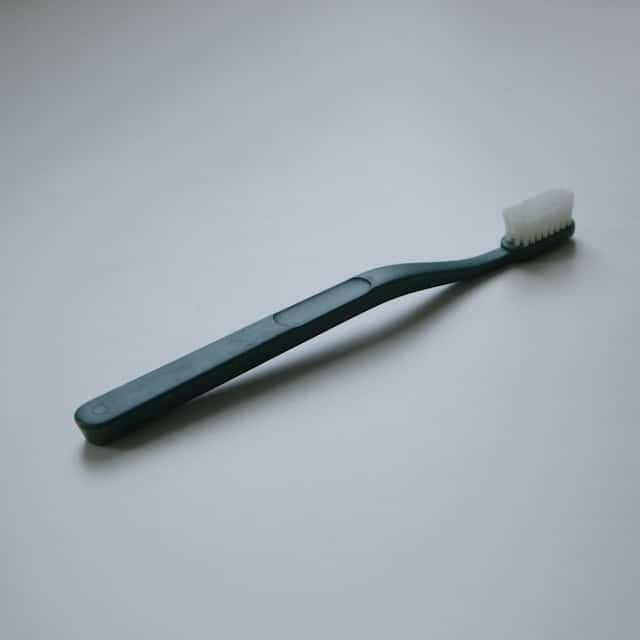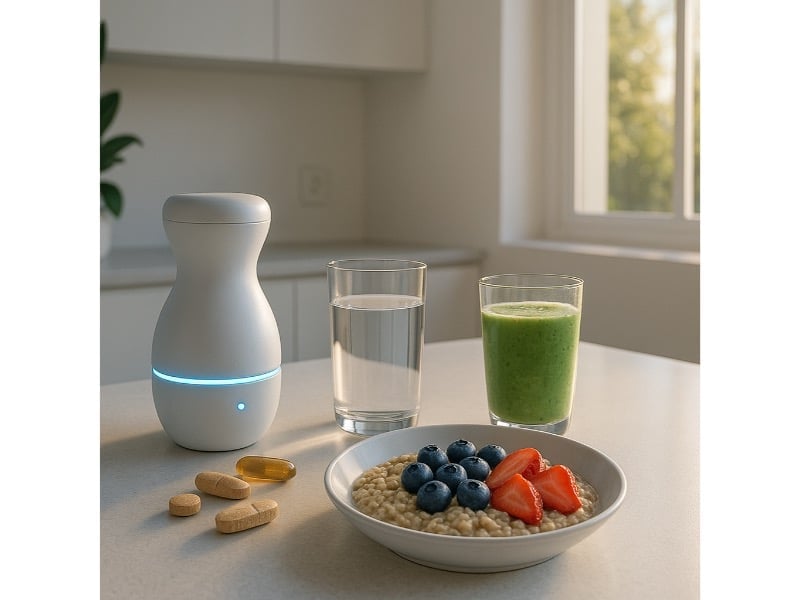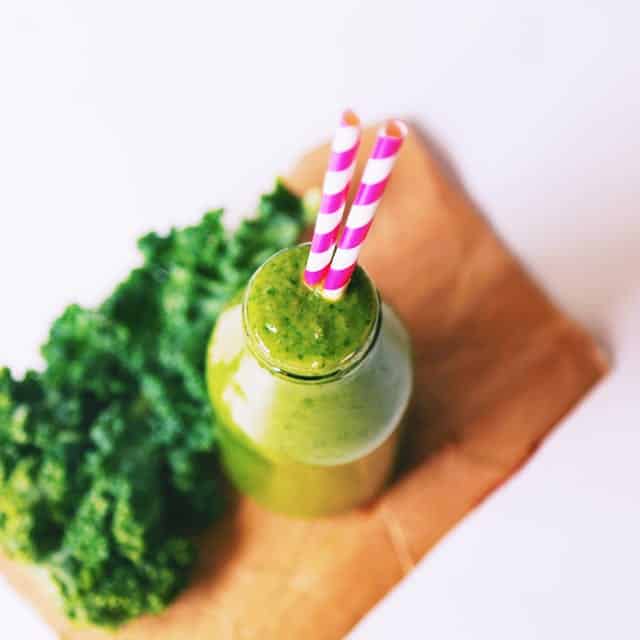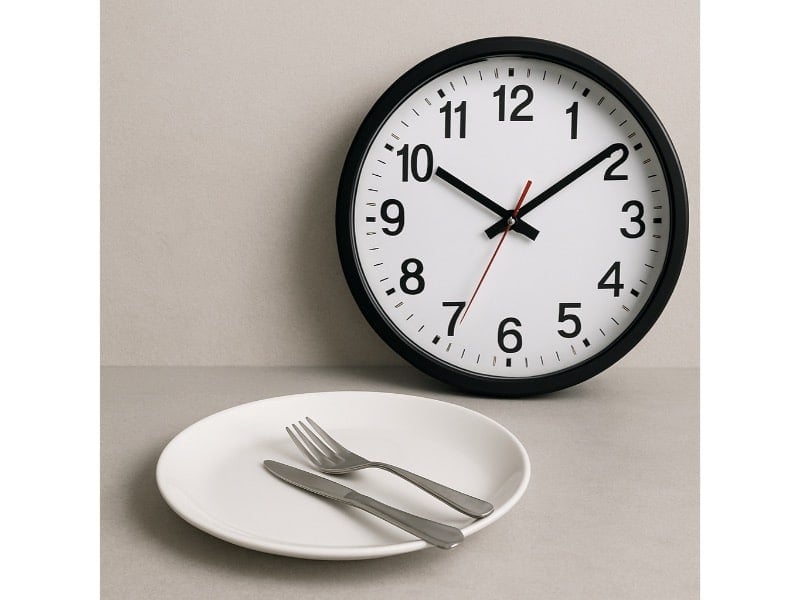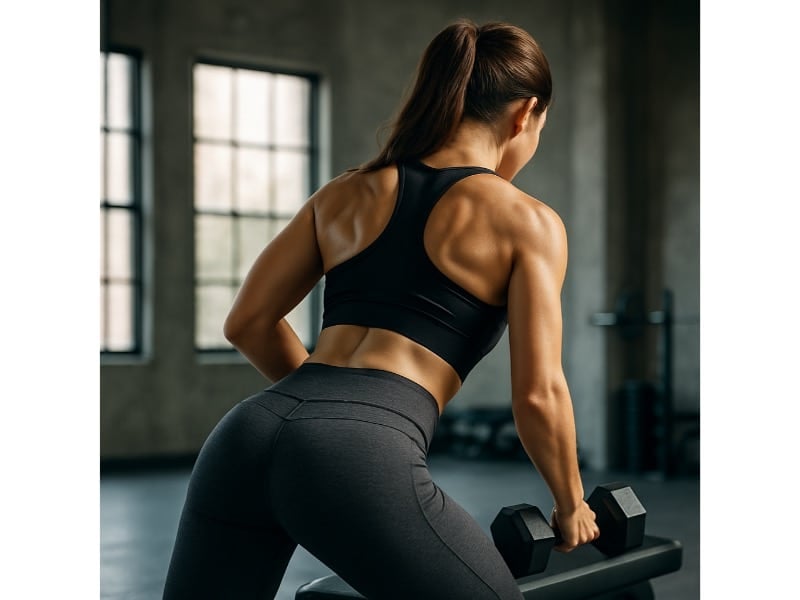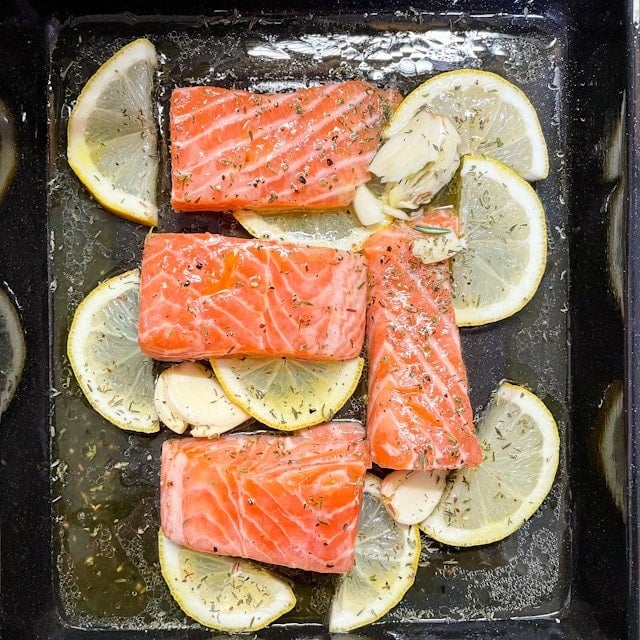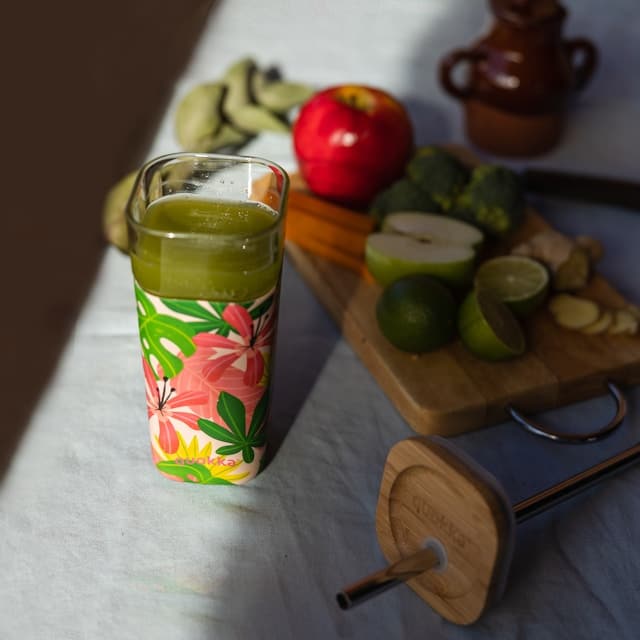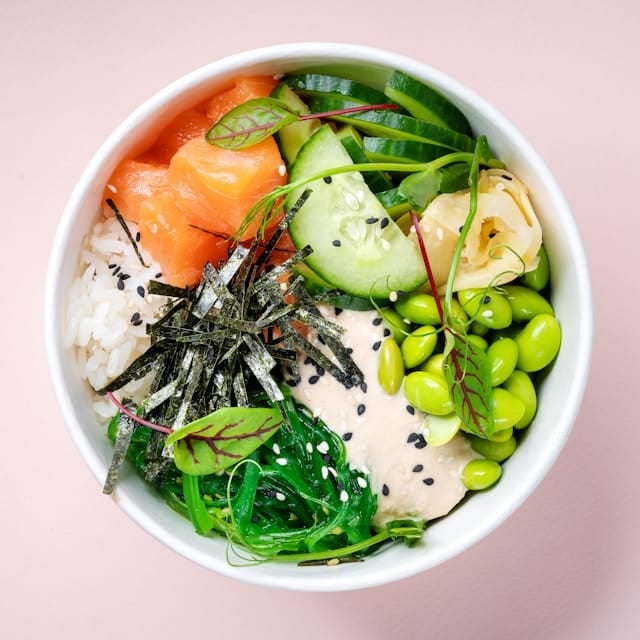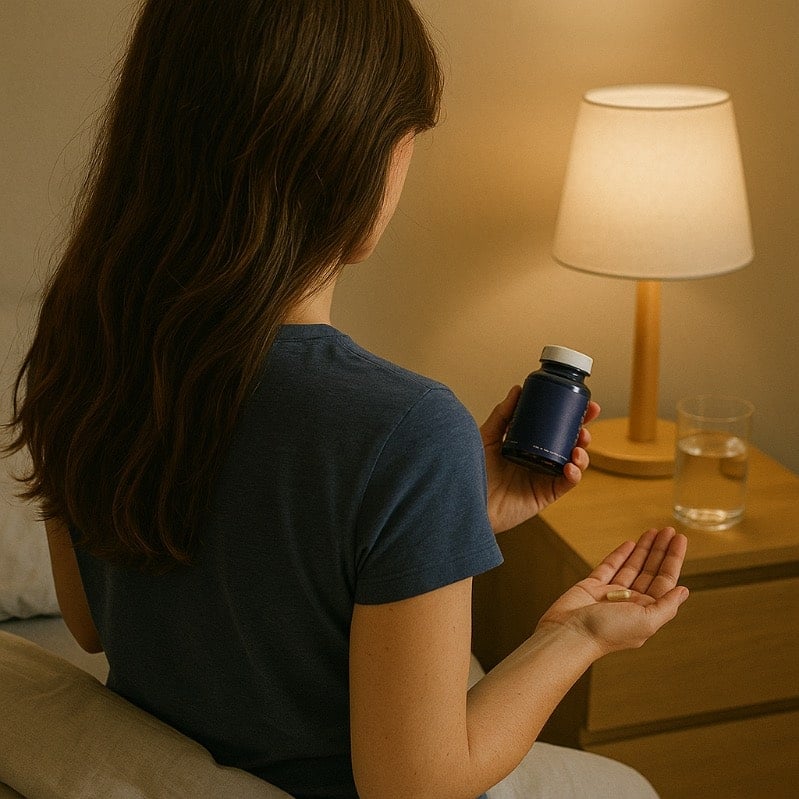Rhonda Patrick’s Daily Routine in 2025

A renowned scientist and health expert, she explores the intersections of nutrition, genetics, and longevity.
Dr. Rhonda Patrick, Ph.D., is a renowned American biochemist recognized for her pivotal work in cancer, aging, and nutrition. With a Ph.D. in biomedical science from the University of Tennessee Health Science Center, her contributions extend from micronutrient research to inflammation and DNA damage in aging. Collaborating with Dr. Bruce Ames at Children's Hospital Oakland Research Institute, she's a dedicated science communicator. Through FoundMyFitness.com, she distills intricate health insights for public consumption, promoting proactive well-being. As co-founder of the ‘FoundMyFitness' Science Podcast, she amplifies her impact, sharing crucial health, science, and nutrition revelations with the world. Let's explore Rhonda Patrick's daily routine to see how we can improve our lives.
- Last Updated: October 28, 2025
-
-
8:00 a.m.
Wake-up
- “I wake up at 8 am and have my first sip of coffee at 8:15”
- Rhonda Patrick aims for 30 minutes to 1 hour of morning bright light exposure. She suggests, “Get bright Blue Light during the day, as early as possible, and avoid that same blue light as much as you can in the evenings.”
-
8:00 a.m.
Dental Hygiene
- Rhonda Patrick uses a Waterpik alongside her flossing routine. Waterpiks use high-pressure water to clean the areas around teeth and the gumsline.
- She utilizes Xylitol gum and was pleasantly surprised to reverse two dental cavities detected by X-rays. She consumed 1 gram of xylitol as part of this approach. Says, “ I use Per Gum, I love it.”
-
8:15 a.m.
Coffee
Rhonda Drinks Dark Roast Coffee Brew (500 ml/day)
Rhonda Patrick on Benefits of Coffee
“I may have another reason to love my morning cup of coffee! A very recent randomized controlled trial found consumption of dark roast coffee brew (500 ml/day) for 1 month caused a 23% reduction in DNA damage in white blood cells compared to baseline levels. DNA damage can accelerate the aging process and lead to cancer.”
“Drinking 2-3 cups of coffee a day was linked with a longer lifespan and lower risk of cardiovascular disease compared with avoiding coffee.”
-
7:00 – 8:00 a.m.
Rhonda Patrick Supplements
Morning Supplements
- Multivitamin
- Fish Oil – 3 grams of Omega-3s (higher EPA version)
- Vitamin D – around 5,000 IU per day
- Vitamin K2 – 45mg of K2, MK4
- Lutein & Zeaxanthin – for eye health
- Ubiquinol – 100 mg
- Sulforaphane – 20 mg of free-form sulforaphane
- PQQ (Pyrroloquinoline Quinone)– for cognitive function and memory
- Berberine – 1,000 mg
- Acetyl-L-Carnitine – 500 mg
- Alpha Lipoic Acid
- Vitamin C
- Turmeric-Curcumin
- Probiotics
Rhonda Patrick on Morning supplements:
Multivitamin:
Rhonda has talked about how a good multivitamin could help maintain general health benefits and prevent micronutrient deficiencies.
Fish Oil:
“I’ve taken fish oil daily for about 9 years now. Some of the studies that have kept me taking fish oil have to do, in particular, with brain health”
“I personally think fish oil is one of the most powerful, anti-inflammatory, dietary lifestyle things that we can get relatively easily that is going to powerfully modulate the way you think, the way you feel, and the way you age,”
Vitamin D:
“No discussion of nootropics would be complete if I didn’t at least briefly mention two hobby horses of mine: Vitamin D and omega-3. The effects of both of these are pretty far reaching and extend far, far beyond the realms of just cognition”
“The other really, really easy lifestyle change that I think has a potentially big impact, for many, many people, is probably taking a vitamin D supplement.”
“I like my vitamin D levels to be between 40-60 ng/ml.”
Vitamin K2
She also uses Vitamin K2 supplement in her daily routine.
“I’ve personally found that the tolerable upper intake level recommended by the institute of medicine of just 4000 IU, usually taken with a vitamin K2 supplement, is actually the amount that lands me right in the middle of that target range.”
Lutein and Zeaxanthin
Rhonda takes Pure Encapsulations Lutein & Zeaxanthin: 10 mg of Lutein and 2 mg of Zeaxanthin daily.
Ubiquinol
Rhonda also takes Ubiquinol to enhance her daily lifestyle.
Omega 3
“Approximately 8% of the brain’s weight is actually omega-3. The number of studies that demonstrate optimizing intake of omega-3 has some effect on cognition or behavior are extremely diverse”
Sulforaphane
Rhonda incorporates sulforaphane through two sources: BROQ Tablets and Moringa Powder.
“Getting past all of the usual suspects on our list of nootropics here, the other nootropic that I actually take frequently is SULFORAPHANE!”
PQQ (Pyrroloquinoline Quinone)
Rhonda uses PQQ 20mg capsules daily
“Supplementation with PQQ decreased biomarkers of inflammation and oxidation and increased markers of microcondial activation in a small trial in humans”
Berberine
Rhonda uses Berberine, – 1,000 mg per doze
Rhonda suggests that the use of berberine might lead to:
– Decreased inflammatory biomarkers.
– Decreased intima-media thickness, a measure of atherosclerotic plaque.
– Enhanced scores in cognitive stroke damage tests.Acetyl-L-Carnitine
Rhonda uses Acetyl-L-Carnitine – 500 mg.
Alpha Lipoic Acid
Rhonda takes Pure Encapsulations ALA- Vitamin C
Rhonda takes Pure Encapsulations – Ester C-Curcumin
“I’ve found Curcumin is actually very helpful.” “Right now the one I’m taking is the product from Thorne.”
“There have also been a couple of other clinical studies published looking at the efficacy of 1g of Meriva per day in reducing symptoms of osteoarthritis and increasing mobility.“
Probiotics
Rhonda used to take VSL#3 every day for gut health but now takes a weakly maintenance dosage
“Sometimes I’ll also throw in the cereal concoction some yogurt and possibly a packet of the probiotic VSL#3, which contains 450 billion probiotic cells per serving”
Rhonda’s Breastfeeding Supplement Routine:
- Multivitamin: Thorne – Basic Prenatal (3 capsules per day)
- Fish Oil: Norwegian Pure-3 DHA (3 grams per day)
- Probiotics: Visbiome Probiotic (1 sachet per day)
- Vitamin D: Thorne – D3 1,000 IU (5 capsules per day, total of 6,000 IU of vitamin D daily, including 1,000 IU from Thorne Prenatal)
- PQQ (Pyrroloquinoline Quinone): Life Extension – PQQ 20 mg (1 capsule per day)
- Vitamin K2: NOW K-2 MK7 100 mcg (approximately 3 capsules per week)
Rhonda’s Toddler Care Supplements
- Multivitamin: Pure Encapsulations – PureNutrients Gummy
- Omega-3 Fish Oil: Pure Encapsulations – EPA/DHA Gummy
- Vitamin D3: Drops and Nordic Naturals Vitamin D3 Gummies (Zero Sugar)
- Vitamin C: Swanson Chewable Vitamin C
You can find out more about her supplement routine by reading our article about the Rhonda Patrick Supplement List.
-
Breakfast
“While some degree of diversity is ideal, for breakfast I do often rotate between a few reliable meals.”
1-Scrambled Eggs with Satueed Kale, Garlic with Grapefruit
“First, one of the main meals that I eat for breakfast are scrambled eggs usually topped with tomatillo salsa (which helps make the eggs less boring), sauteed kale and garlic topped with olive oil salt, and mustard powder and a grapefruit on the side”
Benefits:
”I scramble my eggs and sautee my kale in avocado oil because it is high in monounsaturated fat, low in polyunsaturated fat (I stay away from cooking oils that are high in polyunsaturated fat because it is so easily oxidized and it can be very harmful consuming oxidized fat)”
“The avocado oil also has a very high smoke point so it can withstand some heat”
“One of the main reasons I eat eggs is that eggs provide me with choline. We already talked about how choline affects acetylcholine but it also serves as a methylation source and thus affects global epigenetics, which is a way of changing the activation or deactivation of various genes.”
“I spread some tomatillo salsa on top of my eggs because I like it, foremost but it helps that it’s also high in tomatidine, which has been shown to boost muscle mass”
“One reason why I like Kale a lot is because it is one of the vegetables that is highest in lutein and zeaxanthin,”
“The grapefruit provides me with ferulic acid, a potent molecule that inhibits the proinflammatory cytokine TNF-alpha and E2 series prostaglandins, also inflammatory. Ferulic acid has also been shown to be anti-carcinogenic. The grapefruit is also a source of naringenin has a variety of interesting properties.”
2- Mixed Nuts and Berries Bowl
“Another breakfast that I have is a nut and berry cereal with hydrolyzed collagen powder and coconut milk. My cereal also contains an array of chopped nuts including walnuts, pecans, and macadamia nuts.”
“Finally, as a finishing touch to the breakfast cereal I often throw in some flaxseeds for more of the omega-3 ALA and fiber”
“Occasionally some almond butter for some protein and to sort of make it delicious,”
Benefits:
“The nuts provide me with a host of micronutrients including magnesium, calcium, zinc, a modest amount of protein and the omega-3 fatty acid ALA which isn’t meant to be a substitute for the marine omega-3s.
“Along with the nuts, I often toss in some blueberries for pterostilbene, which is a plant compound present in blueberries that is chemically related to resveratrol except it is about four times more bioavailable than resveratrol.”
“Collagen Powder which provides me with proline (as I mentioned is important for wound healing) and glycine (an important inhibitory neurotransmitter).”
“Unsweetened coconut milk which contains some medium chain triglycerides, some raw cacao nibs which have a plethora of polyphenols including EGCG which activate many antioxidant genes and has been shown to kill cancer cells”
-
Morning Smoothie
- “My micronutrients smoothie that I drink every single morning the total volume is around 64 fluid ounces and I drink half of that and give the rest to my husband Dan”
Rhonda’s Morning Smoothie Recipe:
“8 large kale leaves, three cups of flax milk, (pre-blend), four rainbow chard leaves, three cups of spinach, a tomato, two carrots, an apple, an avocado, a cup of blueberries, one banana, yourself, and one shot glass of flaxseed (optional).”
Rhonda Patrick on Benefits of her Morning Smoothie
“One common factor among all the green leafy vegetables in my smoothie is that they’re high in magnesium. Over 300 different enzymes in the body require magnesium to function properly. My micronutrient smoothie delivers around 588 milligrams of magnesium, which is above the recommended daily allowance.”
“The entire contents of this smoothie, which amount to around 64 fluid ounces, provide the Recommended Daily Allowance (RDA) for several micronutrients, including vitamin A, vitamin B5, vitamin B6, vitamin C, folate, calcium, magnesium, iron, manganese, copper, alpha-linoleic acid, and fiber”
-
-
-
Intermittent Fasting
“Time-restricted eating within a 10-hr window & fasting for 14-hrs a day without restricting calories altered the body’s production of proteins consistent with a reduced risk of developing chronic conditions such as cancer, diabetes, and cognitive decline.”
“I aim for a 10-hour eating window and 14-hour night time fasting window. When I’m feeling especially motivated I eat within an 8 or 9-hour time window and fast for 15-16 hours during the night”
“I usually start my clock as soon as I wake up,” “and go by the strictest of definitions. If it’s not water, it breaks the fast.”
“If I eat within a nine-hour window and I go for a run the next morning, my endurance is very noticeably improved, like extremely noticeably improved,”
Rhonda Patrick on Benefits of Intermittent Fasting
“Recent studies suggest that:
- Eating within an 11-hour window was associated with a decreased breast cancer risk and reduction in recurrence by as much as 36%.
- Earlier meal timing associates with improved effectiveness of weight-loss therapy in overweight and obese patients.
- For each 3-hour increase in nighttime fasting duration was linked to a 20% lower odds of elevated glycated hemoglobin (HbA1C), which is a more long-term marker of blood glucose levels.
- For each 10% increase in the proportion of calories consumed after 5pm there was a 3% increase in the inflammatory biomarker c-reactive protein otherwise known as CRP.
- Eating one additional meal during the day (instead of the evening) was associated with an 8% decrease in CRP.
- Eating within a 12-hour window improved sleep and increased weight loss in normal-weight people.
As a rule of thumb, anything that has the potential to mitigate chronic systemic inflammation is something I personally consider worth trying to dial in since suppression of inflammation is thought to be one of the most important predictors of successful longevity that increases in importance with advancing age and also influences risk of cancer and even potentially mental health. So putting aside the potential to have better glucose control or protect myself from obesity without actually changing the composition of my diet, reducing systemic inflammation has a lot of appeal to me.”
If you’re interested in learning more about intermittent fasting, take a look at our article on the Intermittent Fasting Routine. It offers detailed guidance and tips on the benefits of this practice.
-
Workout
“I like to mix up my weekly exercise routine with aerobic exercise, high-intensity training, strength training, and yoga/ballet exercises. I usually do some form of exercise everyday even if it is only 15 minutes. I usually like to do a 20 to 30 minute sauna 3 times a week”
“Try to get some form of meaningfully vigorous cardiovascular exercise, at least 30 minutes, a few times per week.”
Rhonda on Pre-Workout Nutrition
- According to Rhonda Patrick, eating before aerobic exercises lasting more than an hour can be beneficial.
- Pre-feeding is less effective for aerobic workouts under an hour.
- It enhances anaerobic exercises, allowing extended duration.
- High-intensity interval workouts show lower benefits from pre-feeding.
- If fasting for around sixteen hours, protein intake should follow exercise within an hour to replenish exhausted stored proteins.
Rhonda on her Fitness Regimen and its Benefits
Aerobic exercise
“Usually I go for about 3 mile run about three times a week. I’m not really an endurance athlete, clearly, but I do enjoy it for the cognitive boost it gives me.”
“Aerobic exercise has been shown to increase the growth of new neurons in the brain by two-fold. Aerobic exercise even starting in midlife has been shown to almost completely reverse the structural changes that occur in the brain with aging.”
“Exercise is the new probiotic. Aerobic exercise may be one of the most effective ways to promote gut health and help heal intestinal issues. Aerobic exercise increases butyrate-producing gut bacteria independent of diet. This reduces inflammation & promotes intestinal healing.”
High-Intensity Training
“I do a lot of high-intensity interval Tabatas on a stationary cycle. I use Peloton because I just like that instructor there telling me what to do, and then me competing with everyone else. I’m like, ah, you know? So it works for me.”
“[Peloton] So there’s a bunch of people that are online, either doing the class with you at the same time or all time doing it, so you can kind of toggle on what you want, and you can try to compete against the all-time number.
“It’s 20 seconds on, 10 seconds off, and it’s 10 minutes. I tend to do that at least three times a week”
“To try to get a little bit of high-intensity workout I’ll do squat jumps for a few of minutes at a time. High-Intensity training has been shown to improve learning and memory and when done for 8-20 minutes it increases the production of the neurotransmitters glutamate by 5% and GABA by 7%, as well as norepinephrine, a catecholamine involved in attention and focus.”
Strength Training
“I also lift some weights and do lunges and squats with weights either two to three times per week. It is really important to maintain muscle mass.”
Yoga and Ballet
“ I do some yoga and ballet exercises 3-4 days a week. I really like to do these exercises because they increase my flexibility and tone very specific muscle groups. I like it but your mileage may vary.”
Rhonda on Post-Workout Sauna
“I always have my sauna on preheating up, takes about an hour and a half, and I get it to about 189 degrees Fahrenheit. I hop right in the sauna after my Peloton”
“I literally down a bunch of water, and then I get in, and then I either read a science paper, prepare for a presentation or a podcast, or I hash over things in my mind.“
“I like to sauna after a workout. First, there’s entirely practical reasons: doing an intense sauna session prior to working out can increase exhaustion a little bit too quickly, making it very hard to finish a workout.”
-
Sauna
- Rhonda strongly suggests using a sauna, stating, “It really works.”
- Rhonda warms the sauna to about 186°F, spending 20-30 minutes with 10-20% humidity. She does this three times weekly.
Rhonda’s Sauna Journey:
- Starting in 2009 during her grad school days, Rhonda began using saunas. She firmly believes sauna sessions enhance memory, reduce stress, and improve blood flow, noting their contribution to releasing endorphins and norepinephrine.
- Rhonda believes sauna benefits come mainly from direct heat, making her prefer hotter saunas.
- Rhonda believes sauna use enhances her sleep, noting, “Heat exposure with appropriate cool down has helped me with aspects of my sleep.”
Rhonda on Benefits of Sauna
“I was very stressed out in graduate school. And this sauna started to really noticeably affect my anxiety and my ability to handle stress. And I was like, what is going on here?”
“When you get in the sauna, you release a lot of endorphins. The possibility that that sauna use could play a role in mood and attention by increasing norepinephrine and affecting our sensitivity to and production of beta-endorphin, giving us a sort of runner’s high. The potential of which was something that initially appealed to me when experimenting with my own personal sauna use.”
“When you’re exercising, you’re elevating your core body temperature. You’re sweating. When you’re actually in the sauna, blood does get redistributed to the skin to facilitate sweating, but, much like exercise, blood flow, in general, is improved to the brain, to the muscles, everywhere”
Rhonda on the Heart-Healthy Benefits of Sauna
“Some of the positive benefits of sauna use on heart health may have to do with similar benefits seen with regular physical exercise. Heart rate can increase up to 100 beats per min during moderate sauna bathing sessions and up to 150 beats per min during more intense warm sauna use. 150 beats per minute corresponds to moderate-intensity physical exercise, which as we already know, also has a positive effect on cardiovascular health.”
“Heat stress from sauna use also increases plasma volume and blood flow to the heart, known as stroke volume. This results in reduced cardiovascular strain so your heart has to do less work for each beat that it does to pump oxygen-rich blood to your tissues and brain. Additionally, long-term sauna use has been shown to generally improve blood pressure, endothelial function, and left ventricular function.”
“For the minimal benefits of lower cardiovascular disease mortality, lower all-cause mortality, and lower Alzheimer’s disease risk, we have to address the literature that actually observed these effects. In this case, that would be 20 minutes at 174º F (or 79º C) 2-3 times per week. Remember, however, those that used the sauna for 4-7 times a week, had an even more robust effect.”
If you’re interested in including sauna sessions into your routine, consider investing in a top-quality home sauna. The indoor saunas provide an excellent way to enjoy the benefits of sauna therapy in the comfort of your home.
-
Cold Exposure
- Rhonda Patrick incorporates cold exposure, such as ice baths, for brain and mood benefits, often combining them with sauna sessions to enhance mood
- After intense sauna sessions, she noticed prolonged sweating can be countered by cold showers.
- If you want to integrate cold exposure into your daily routine, consider opting for a cold pod ice bath tub. These premium options make it easy and effective to reap the benefits of cold therapy.
Rhonda on Cold Therapy
“One of the main reasons I like to expose myself to the cold are the effects it seems to have on the brain, mood and possibly attention”
“I’ve personally done ice baths interspersed with sauna use Rick Rubin style and found it to be very, very enjoyable. It seemed to help me sleep better and I definitely felt like my mood was significantly affected for even the next 24 hours.”
“Something I’ve personally observed that’s sort of interesting is that after a sufficiently intense sauna session, it can be very hard to stop sweating even potentially hours after you’ve cooled down — unless you’ve had a very borderline painfully cold shower. For social reasons, at least for me personally, it can almost be a requirement.”
For more information on how to include cold plunges in your routine, check out our article on the Cold Plunge Routine.
-
Lunch
- “As a breakfast or lunch, I occasionally have an avocado topped with fresh lemon juice and wild Alaskan salmon roe, possibly accompanied by a side of sauerkraut”
Rhonda on her Nutrient-Packed Lunch
“Avocados are really high in potassium and provide all of the various forms of vitamin E” “The avocado is also a great source of monounsaturated fat.”
“Salmon roe caviar is a very good source of omega-3 fatty acids.”
“The sauerkraut is a good source of fermentable fiber aka prebiotics.”
Rhonda on Refined Carbs
“I just mainly follow a rule of thumb that I should eliminate refined carbohydrates in particular, and refined sugar especially and then try to eat with a special attention to nutrient density. “
“In my opinion, the best thing you can do is to cut it out!! You will be so much healthier by just cutting out this one thing. Once you stop eating refined sugars foods begin to actually taste sweeter that’s a real effect that’s been shown in clinical studies.“
Rhonda on Monitoring Blood Sugar Levels
Rhonda utilizes the Precision Xtra Continuous Glucose Monitor (CGM) and suggests increasing fiber intake as a means to reduce glucose levels.
“I learned a lot from it as well in terms of foods that I have a bigger spike to, [after a meal],” “And other lifestyle factors that affect my fasting blood glucose,”
“One of the things that’s really consistent with lowering the [post-meal] glucose response is more fiber,”
-
Smoothies
- Rhonda has been doing her ‘micronutrient smoothie hack’ 4-5 times per week for the past 6 years,” and she says, “‘My brain always feels supercharged’ after consuming it
- Prefers Smoothies to Juices, says “I have tried to stay away from juices because they remove the fiber matrix and this can change how glucose is absorbed. “
- She has generously shared a variety of smoothie recipes on her YouTube channel, “FoundMyFitness”
Rhonda on her “Micronutrient Smoothie”
“Do everything in your power to maximize vegetable intake, possibly using the micronutrient smoothie method as a way to jumpstart the habit. The third huge lifestyle input that I think can make a big, big difference is simply doing whatever it takes to potentially triple the amount of vegetables you take in on a daily basis. For me, the way I’ve gone about this has been to make a habit out of creating a micronutrient smoothie, as I’ve termed it. Basically, I grab various combinations of vegetables and sometimes a few fruits to balance it out, drop them all into a powerful blender or food processor and drink, drink it down.”
“The third huge lifestyle input that I think can make a big, big difference is simply doing whatever it takes to potentially triple the amount of vegetables you take in on a daily basis. For me, the way I’ve gone about this has been to make a habit out of creating a micronutrient smoothie, as I’ve termed it. Basically, I grab various combinations of vegetables and sometimes a few fruits to balance it out, drop them all into a powerful blender or food processor and drink, drink it down.”
Rhonda on Using Smoothies as a Partial Meal Substitute
“I often enjoy wedging a smoothie in, sometimes as a partial meal substitute, that is particularly focused on cramming in some extra servings of some fruits and vegetables. I consider this a pretty important lifestyle hack that can sort of just be thrown on top of whatever else you’re doing and will help recalibrate a lot of important health parameters in a useful way.”
Rhonda’s Top Smoothie Choices
- “As a base, it can often contain kale, frozen berries, avocado, hydrolyzed collagen powder and water then a number of variations on top of those.”
- “I also make a broccoli sprout smoothie usually consisting of anywhere between 100 g fresh weight or sometimes a bit less of frozen since freezing them actually increases the sulforaphane content. I do this about 3 times a week usually.”
- “There’s something about a good green juice. There may be a placebo component since I have a healthy amount of enthusiasm, but it really does make me feel good. I feel invigorated, motivated—all positive stuff.”
Rhonda’s Green Juice recipe:
“Today’s recipe: 1 organic spinach bunch, 4 large organic celery stalks, 1 bunch of organic Italian parsley, 1 organic cucumber, 1 small organic lemon, and a nice serving of fresh organic ginger. The serving size, in this case, was really large and definitely could be for two people.”
-
-
-
4:15-5:25 pm
Early Dinner
Rhonda Patrick on the Variety of Dinners She Enjoys
- “For dinner, I usually have some cooked vegetables like sauteed spinach which is very high in folate (as are all greens).”
- “Sometimes, instead, I’ll have some collard greens, bok choy, broccoli, brussels sprouts, parsnips (of course, since these are all cruciferous vegetables I eat these usually with mustard powder sprinkled on top since that provides an additional source of myrosinase).”
- “Or, instead, I’ll have a big salad full of greens.”
- “For my protein, I often have a big serving of baked wild Alaskan salmon. I try to eat salmon 2-3 times per week, which is what the American Heart Association recommends.”
- “Another protein that I rotate for dinner is chicken legs from pasture-raised chicken.”
- “Sometimes I throw the chicken bones in some water with some spices and vegetables and make chicken bone soup”
- “Finally, I also sometimes have a grass-fed filet steak a few times per month.“
Rhonda on the Benefits of Her Dinner Choices
- Cruciferous vegetables: “Cruciferous vegetables, in general, are among my favorite types of vegetables to eat because they contain isothiocyanates.”
- Folate: “Folate provides a precursor that makes a DNA nucleotide called thymine.”
- Green Salad: ”Provides me with a cornucopia of micronutrients including folate, magnesium, calcium, vitamin K1, lutein, zeaxanthin and sulfoquinovose, a prebiotic that feeds beneficial bacteria in the gut.”
- Pasture-raised chicken: “I like because in addition to the protein I also get some cartilage which is high in collagen, proline, and glycine.”
- Chicken: “Chicken is also very high in selenium which is a cofactor needed for all glutathione-related enzymes to work and also has a modest amount of zinc, copper, and iron.”
- Grass-fed filet Steak: “is a good source of vitamin b12, iron, and zinc. ~16% of all menstruating women are actually iron deficient.
Rhonda on Late-Night Eating
“Eating late at night also may “reset” peripheral clocks and result in misalignment of metabolism, which means when you wake up your metabolism is already at end of its cycle.”
-
Evening Supplements
- Additional Omega-3s: Rhonda includes an extra 3 grams of fish oil, opting for a higher DHA version.
- Magnesium: She takes 120 mg Magnesium Glycinate.
Sleep Supplements
- Rhonda takes Magnesi-Om by Moon Juice.
- Rhonda avoids caffeine and opts for her nootropic drink with lower caffeine for afternoon energy. She calls it “brain dynamite” and feels “on fire” after drinking it.
- She used a low-dose melatonin supplement (300 mcg). However, she transitioned to a higher dose (9 mg) to manage night terrors.
Rhonda on Magnesi-Om by Moon Juice
“I take a supplement called Magnesi-Om by Moon Juice, which is in the form of a powder. It contains a touch of monk fruit and has a pleasant taste. I usually consume it a little before bedtime, although I make sure there’s a considerable gap since I prefer not to have excessive fluids right before sleep. The supplement includes magnesium threonate along with other types of magnesium. I find it quite appealing. The aspect that caught my attention was the inclusion of magnesium threonate.”
Rhonda’s Nootropic Drink Recipe:
- Lion’s Mane Mushroom
- Cocoavia Cocoa powder – Utilizing 1 sachet
- An even mix of coconut powder and MCT powder
- Stevia – Added for a pleasing taste
- Cinnamon powder
- Water
-
Sleep
- Rhonda recommends 6-8 hours of sleep every night
- She gets 30-60 mins of morning light for circadian alignment.
- She Avoids blue light at night by using red-emitting Philips Hue bulbs or dimmers.
- She limits screen time to 2 hours before bed to reduce anxiety and enhance relaxation.
- Rhonda sleeps in a cool room (60-67°F) for optimal sleep conditions.
- She uses blackout curtains, sleep masks, or earplugs to create a dark sleep environment.
- Rhonda Patrick practices time-restricted eating, stopping eating 3 hours before bed.
Rhonda’s Sleep Optimization Strategies
- Rhonda suggests getting 30 minutes to 1 hour of bright light exposure in the mornings to anchor your circadian clock.
- She avoids blue light after sunset by using Philips Hue bulbs emitting red light in the evenings, which promotes better sleepiness. She also recommends adding dimmers to rooms and mentions light-blocking goggles as an alternative.
- Rhonda refrains from screen time (phone, computer, iPad) 2 hours before sleep. It’s not just about the light, but rather, she highlights that these devices can raise anxiety and hinder relaxation. To unwind, she suggests reading offline content like science publications or other genres to promote better sleep quality.
- Rhonda emphasizes sleeping in a cool room (60-67°F or 15-19°C), as it complements the body’s temperature drop during sleep. In her warm locale (San Diego, CA), she relies on an Eight Sleep cover that circulates water to maintain a stable temperature, providing optimal sleep conditions regardless of external fluctuations.
- Rhonda ensures a dark bedroom by using blackout curtains or sleep masks to counter even minor light disruptions. For noise interference, she employs high-quality earplugs or utilizes “white noise” from standalone machines or phone apps to promote uninterrupted sleep.
- Rhonda practices time-restricted eating, stopping eating three hours before bedtime. This approach minimizes digestion during sleep and can enhance sleep quality.
Rhonda’s Tips for Better Sleep
“Early bright light exposure, limiting evening light exposure, decreasing the temperature of the room in which we sleep, reducing our anxiety, and restricting the intake of substances that alter our alertness can improve our sleep.”
“There may be a sleep “sweet spot” with too little or too much sleep associated with impaired brain function. Older adults who consistently get 6-8 hours of sleep per night delay cognitive dysfunction and have sharper brains.”
-
Disclaimer: Information in this article is based on supplements and products Rhonda Patrick has publicly mentioned through her podcast and other appearances. The items linked are similar options and may not reflect her exact choices. Certain links are affiliate links, which may generate a small commission for us. All details are provided for educational purposes and not as medical recommendations.
-

